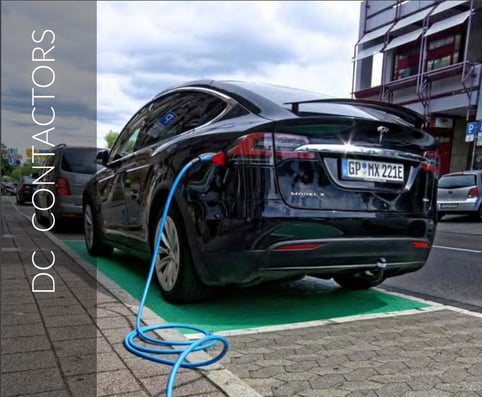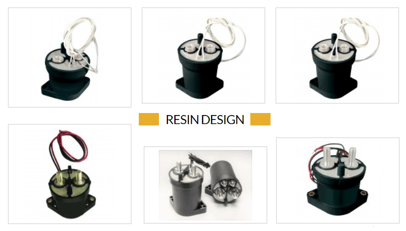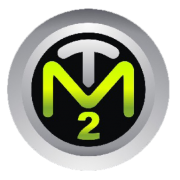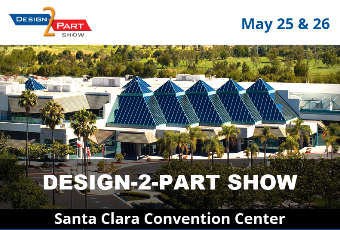
The manufacturing process within the electronics industry has evolved over the years which has led to further development of various types of DC contactors in the electronics industry.
DC Contactors are essential components that are used as electrically controlled switches. The significance of contactors to the modern electronics industry cannot be overemphasized. A contactor is built to control the starting, stopping, reversing and regulation of the power circuit by opening and closing the circuit. Different types of manufacturing materials are used to make DC contactors. The resin and ceramic designs are the most popular.
In this article, a comparison between these two different designs will be made to give you basic knowledge of resin and ceramic design DC contactors. This will help keep your team aligned and conversations in sync.
Estimated reading time: 11 minutes, 28 seconds.
Here are key differences between resin design DC contactors and ceramic design DC contactors:
-
- Material:
As the name suggests, resin design DC contactors are made of a resin material, usually an epoxy or polyester resin, while ceramic design DC contactors are made of a ceramic material. - Electrical properties:
Resin design DC contactors have good electrical insulation properties and are often used in applications where low voltage or low current is involved. Ceramic design DC contactors, on the other hand, have excellent high-temperature resistance and are often used in high-temperature applications. - Mechanical properties:
Resin design DC contactors are relatively flexible and can be molded into a variety of shapes and sizes, making them easy to customize for specific applications. Ceramic design DC contactors are much more rigid and are limited in terms of their shape and size. - Cost:
Resin design DC contactors are generally less expensive than ceramic design DC contactors, making them a more cost-effective option for many applications. - Application:
Resin design DC contactors are commonly used in applications such as power distribution, motor control, and lighting control, while ceramic design DC contactors are often used in high-temperature applications such as furnace control, kilns, and other high-temperature industrial processes.
- Material:
Characteristics of Resin Design DC Contactors
One of the coil's surfaces is against the open atmosphere while the other surface is encapsulated. This poses a risk for the contacts being unable to be attracted or released and subsequently leads to primary contacts welding either in the open or close position. This happens infrequently. As resin design DC contactors have more material covered than the other categories, this limits the heat dissipation. Also, the quality of the through-hole pins of resin-designed DC contactors is not as good as that of the other categories.
Resin design DC contactors employ epoxy, and corona extinction coils with the same voltage rating as those using polyester film sleeves do not require it. This indirectly reduces the overall length of the coil and makes the contactor design more compact and cost-effective. The inherent design of resin contactors allows the contacts to be significantly larger for the same current rating. This is because resin DC contactors can employ a unique single-coil design. The contacts are arranged near the center of the coil and magnetically linked to the coil upon energization. When the coil is energized, the contacts are pulled together in the same direction, which is different from the conventional dual coil design, which requires the contacts to be pushed or pulled.
Now, let us look at the characteristics of resin design DC contactors. Epoxy resin sleeves have high mechanical strength, good creep resistance and serve as an excellent electrical insulator; so they can provide good protection to the coil.
Applications where resin-based DC contactors or components may be used include:
- Industrial equipment: Resin-encased DC contactors can be used in heavy machinery, manufacturing equipment, and process control systems where they need to be protected from dust, moisture, and other environmental factors.
- HVAC systems: Resin-insulated DC contactors can be found in heating, ventilation, and air conditioning (HVAC) equipment where reliable performance and durability are essential.
- Water treatment and pumping systems: Resin-based DC contactors can be utilized in water treatment plants, pumping stations, and irrigation systems to ensure protection from moisture, chemicals, and other environmental factors.
 Marine and offshore applications: Resin-encased DC contactors can be used in shipboard electrical systems and offshore platforms where they must withstand harsh environments, saltwater, and corrosive conditions.
Marine and offshore applications: Resin-encased DC contactors can be used in shipboard electrical systems and offshore platforms where they must withstand harsh environments, saltwater, and corrosive conditions.- Renewable energy: Resin-insulated DC contactors may be used in wind turbines and solar power systems to provide reliable and durable operation in various weather conditions.
- Electric vehicle charging stations: Resin-based DC contactors can be found in EV charging stations to ensure long-lasting performance and protection from the elements.
Characteristics of Ceramic Design DC Contactors
DC contactors with a ceramic design start their life as a powder. This powder is then made into a liquid and molded into the desired contactor shape. These shapes are usually quite intricate, which can increase the flow of current leakage over the surface of the contactor. However, the risk can be minimized through carefully placed screens and stress relief features. Reducing the risk of current leakage is important as the main advantage of using a ceramic design is the reliability given by their high dielectric strength, resisting current flow purely through the surface of the material. This makes ceramic design contactors perfect for high-voltage applications, and they are also mainly resistant to physical and thermal shock due to their mechanical and thermal stability.
However, due to the complex manufacturing process of pressing and firing ceramic material - before having to coat it in a conductive metal and then put it in a furnace to complete the firing process - the manufacture of a ceramic design DC contactor is more labor intensive than resin design. This can lead to longer manufacturing times, increased reject rates, and, ultimately, higher costs. However, ceramic design DC contactors have a longer life expectancy than resin design. Combined with their higher performance, better resistance to environmental factors, and potential for reduced sizing, they may be more cost-effective in the long run.
Additionally, higher volumes of DC contactors due to industry demand will help drive down the costs of ceramic design production. As a result, ceramic design DC contactors are found in a wide range of applications, from the electronics industry to medical and high-voltage systems.
However, it is essential to consider whether the advantages of a ceramic design - such as longevity and robustness - are worth the potential added financial and manufacturing burdens, particularly in smaller-scale or lower-voltage projects.
Applications where ceramic components are used in high voltage/current systems include:
- Power transmission and distribution: Ceramic insulators and vacuum interrupters can be found in high-voltage switchgear, transformers, and circuit breakers to ensure safe and efficient operation.
- Industrial applications: High voltage and high current contactors with ceramic components are used in heavy-duty equipment, such as electric arc furnaces, induction heating systems, and electroplating equipment.
- Electric transportation: In electric vehicle charging stations and railway systems, ceramic components can be used in high voltage/current contactors and switches to manage power flow.
- Renewable energy: In wind turbine and solar power systems, ceramic components can be utilized in high voltage/current contactors and circuit breakers for power management and safety.
Comparison of Resin and Ceramic Design DC Contactors

As mentioned earlier, the encapsulated resin and traditional ceramic designs can perform excellently in real-world applications. However, a detailed comparison between the resin and ceramic design DC contactors can facilitate the development of a new type of contactors.
Firstly, from the thermal conductivity point of view, resin is a type of insulator, and its thermal conductivity is relatively low compared to ceramic. However, the resin-designed DC contactor is much more prominent under the same heat resistance level as the ceramic design. This is because the heat generated in the contactor needs to be transferred to the outside via the contactor body and finally to the surroundings. With the lower thermal conductivity of the resin, more transfer paths will be developed, leading to a larger volume for the same heat dissipation. In the meantime, the minimum creepage distance required for resin is more significant than ceramic because of its hydrophobic nature. In water, free ions flow under the influence of an applied electric field and may increase the leakage current immensely.
Therefore, a greater creepage distance is needed to form a longer leakage path to minimize leakage current.
For the same size of creepage, the ceramic design DC contactor can achieve higher dielectric strength attracted by the reverse voltage between the contact and the ground than the resin design.
On top of that, for the same voltage level type of contactor, the ceramic design can always draw much more output than the resin design.
However, the maximum voltage type of ceramic design DC contactor is found to be less than the equivalent resin's.
Finally, the advantage of resin design over ceramic design is impact damage resistance. No doubt, resin is a lot tougher than ceramic with high mechanical strength.
Which means the resin design DC contactors can lead to higher impact protection and vibration resistance.
However, replacing all the ceramic design DC contactors with the resin type is not always a good idea.
By comparing the above, the resin design technology is not mature and less developed compared to the traditional ceramic design. It can also be seen that the ceramic design is superior in many aspects compared to resin technology.
However, considerable effort has been put into improving the resin design materials and the contactor design. The resin technology is envisioned to replace the ceramic design soon.
But at this moment, several factors, such as material properties, manufacturing methods, technology limitations, economic considerations, etc., must be considered when choosing either resin or ceramic design contactors in practical applications.
Recommendation
Strongly consider resin design DC contactors as a replacement for ceramic design DC contactors to decrease the contactor's burden. In the present industry, relays are already widely used. Still, based on the technology development and the requirements of the industries, contactors will be the best choice for switching appliances such as motors, heaters, and lamps. That is why its design has now already moved from traditional to modern ones such as using the solid-state design and the intelligent power module.
In summary, resin design DC contactors will be the best substitution for ceramic design DC contactors due to faster, more environmentally friendly, lower energy consumption during production, in addition to a longer life span. As long as the design and the selection of materials are proper, the contacts welding can be decreased as much as possible. I advise engineers to design a brand-new type of contactor.
In contrast, engineers can still improve the design and materials of the contactor by following technical standards and requirements. Also, resin design DC contactors are already widely used for special applications, such as naval engineering. As we know, the naval environments are not a convenient place for maintenance and repair, while the ceramic design DC contactors will always meet the welding problem after some years of usage.
So, using resin design contactors can effectively reduce maintenance generation and increase the appliances' safety.
The opinions of the manufacturers regarding substituting ceramic design DC contactors with resin DC contactors should be obtained to increase the credibility of the recommendation.
The choice between resin and ceramic design DC contactors ultimately depends on the specific requirements of the application and the trade-offs between cost, electrical properties, and mechanical properties. In the future, electrical and electronic engineers working in the switches and contractors industry should focus on creating more intelligent resin design DC contactors.
This comprehensive comparison will be beneficial for the design of the future. It presents the differences between resin design DC contactors and ceramic design DC contactors.
Resin design DC contactors for lower current/voltage applications.

Ceramic design DC contactors for higher current/voltage applications.





